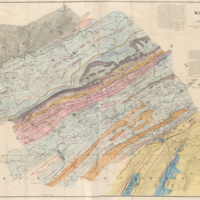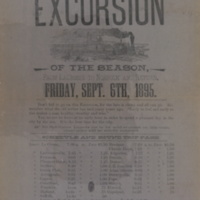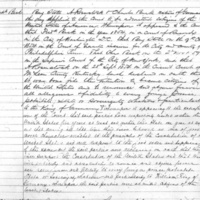Development of the Industrial United States
1870-1900

This era is defined largely by migration of African Americans from the South to the Midwest and North; immigration to the U.S. from other countries; and growing urbanization, all of which fed the industrial system. The rapid influx of Black southerners heightened racial tensions as they fought for equality and opportunity. Immigrants, for the first time, were less likely to come from Western Europe, but rather from Southern and Eastern Europe, Asia, Mexico, and Central America. Along with the need for expanding educational systems, which were often structured to push assimilation, the rise in immigration also led to religious tensions as Protestantism was no longer the dominating faith of those immigrating to the United States.
Learn more in the National U.S. History Content Standards.
Recently added items
William Mahone Writes About Election Fraud, Letter, 1885
After the Civil War and the enfranchisement of Black men, political contests in Virginia were often heated. In 1879, a biracial coalition known as the Readjuster Party won control of the General Assembly and two years later won the governor’s race,…
James S. Russell and St. Paul Normal and Industrial Institute, Broadside, 1895
This broadside advertises an excursion by train from Lawrenceville to Norfolk as a fundraiser for St. Paul Normal and Industrial Institute. James Solomon Russell (1857–1935) founded St. Paul Normal and Industrial School in Lawrenceville to serve the…
Anthony Rosenstock, Naturalization, 1869
As a young man Anthony Rosenstock (1833–1906) left his home in what is now Germany and sailed from Hamburg to New York City, arriving in November 1853. When he landed, he had three cents and a letter of introduction to a distant relation. He…
The Richmond Planet, Masthead, Richmond, 1893
The Richmond Planet was first published in 1882, seventeen years after the end of the Civil War. The thirteen founders (including James H. Hayes, James H. Johnston, E.R. Carter, Walter Fitzhugh, Henry Hucles, Albert V. Norrell, Benjamin A. Graves,…




